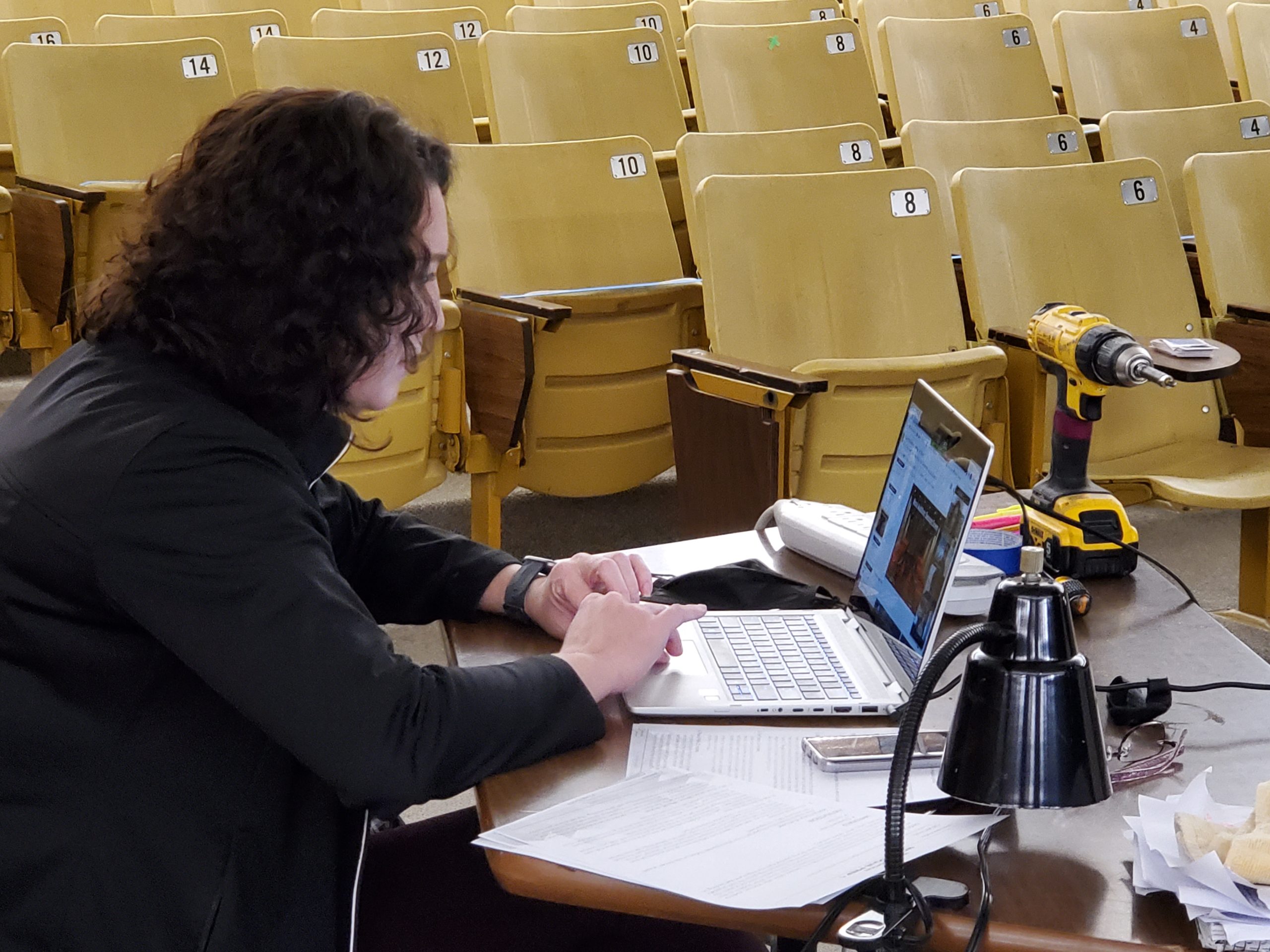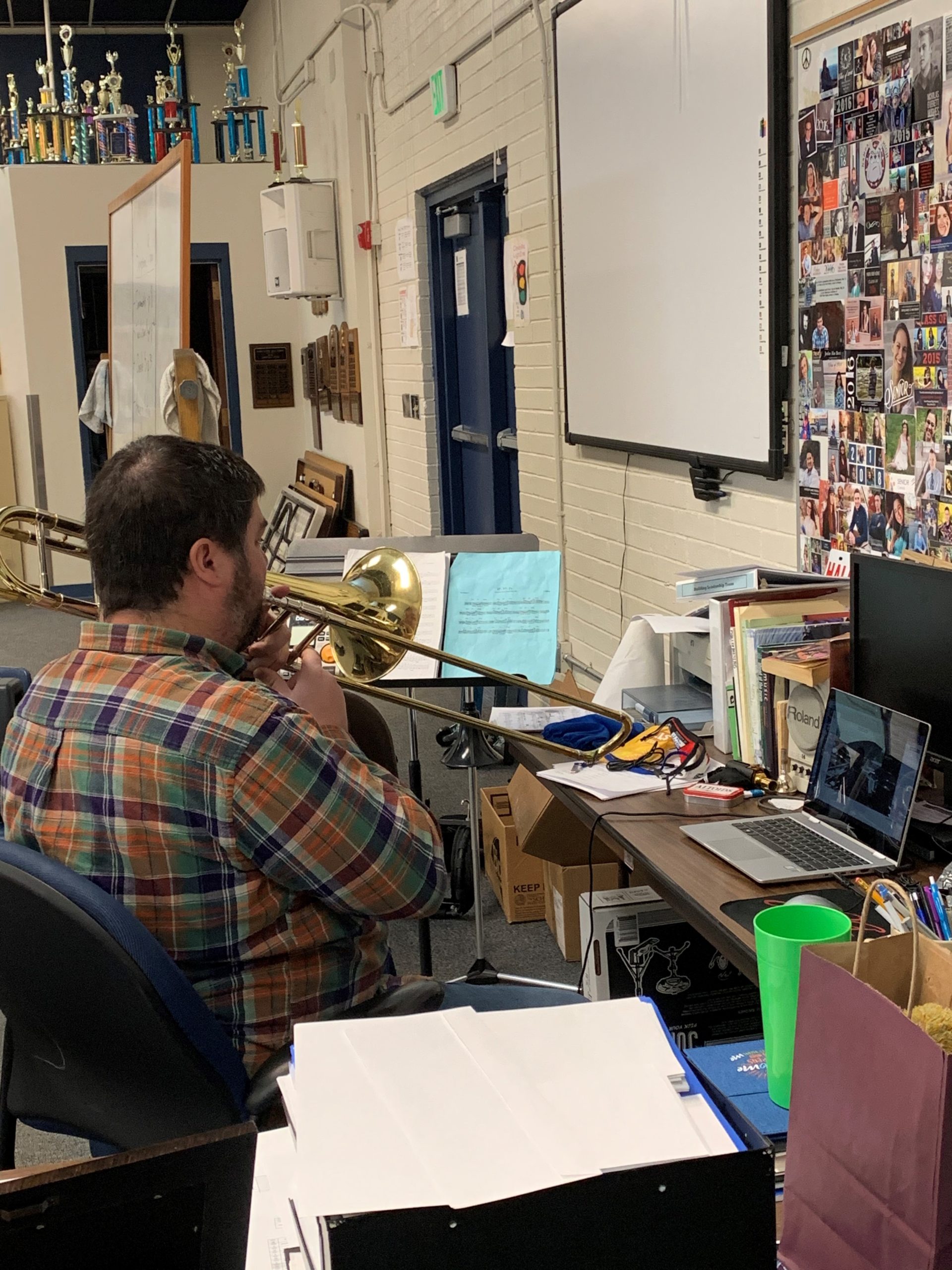
Online classes have been dreary for Nampa High senior Kelsie Putnam, in large part because she lost the hands-on experience of her favorite class, Advanced Theater.
“Theater is all about expression and there’s only so much you can do through a screen,” Putnam said in an email. “(Online class) sucks the life out of people, leaving them emotionless and void of fun. Acting and the arts are all about fun!”
Putnam has been in a school theater program for six years. Despite the challenges of socially-distanced acting, she still relies on theater to get her through “a boring week” of online classes and intermittent naps at home.

The pandemic is hard on students like Putnam and teachers like Kea Loveland, who are trying to find ways to teach and learn the arts remotely. Loveland, Putnam’s theater teacher at Nampa High School, is hoping to start rehearsals in-person this month for her advanced theater classes. But for now, the Nampa School District is all online.
Loveland has her students rehearsing one-act plays over Zoom, using the class time to teach performance in front of a camera.
When the district moves into a less restrictive risk category from Southwest District Health, Loveland said she plans to have a small performance for her students’ one-act plays. She said one family member for each student will likely be invited.
Meanwhile, arts teachers in West Ada School District said the pandemic has doubled their workloads because the district is in a hybrid teaching model. Cheri Robinson, who teaches band and orchestra at Sawtooth Middle School, puts together a lesson for both the students in class and the students online and isolating at home due to COVID-19 exposure.
John Burton, the band teacher at East Valley Middle School, feels like he spends more time tracking down students to turn in their assignments and to show up for class than he spends on grading and reviewing student work.
Burton’s three bands have not been able to play together as a group. He hands out material, talks to the students about it and waits for them to turn in assignments through a recorded audio file.
“That is really as far as it can go,” Burton said. “It is hard to check for understanding. Before the pandemic, we could talk about the music, play, talk, play. But now we have to talk and then I wait for them to submit work online.”
Christina Lee teaches music at Lake Hazel Elementary School, where students are in school full time, but about 80 are in isolation, according to the West Ada School District website.
“It is a balance, how do we make the most meaningful time with them, but also assess them?” Lee said. “And also how do we use technology to help students who are isolating at home?”
Despite the challenges, there are still bright spots. When students are able to make music in the classroom, Lee said it is a joy that makes everything worth it.
“I am trying to focus on the positives, on how music still changes our lives and if I am still able to provide that and give students access to joyful moments, that makes it worth it,” Lee said.
Robinson agrees. She said she has changed up her teaching tactics three times since the pandemic hit. “We are trying so hard and we want them to be successful,” Robinson said. “I am just trying to make it feel better for them.”
Robinson is having her students play Christmas music in small groups while she videotapes them. She plans to send the videos home to student’s families as a substitute for a traditional Christmas concert.
For students learning at home, Robinson tries to send them music theory lectures and packets to work on.
“This is forcing me to really solidify my lessons and force myself to teach them exactly what they need to know,” she said.
